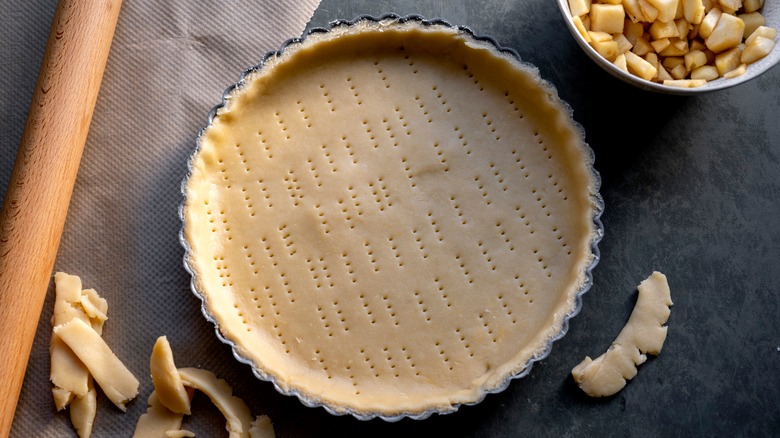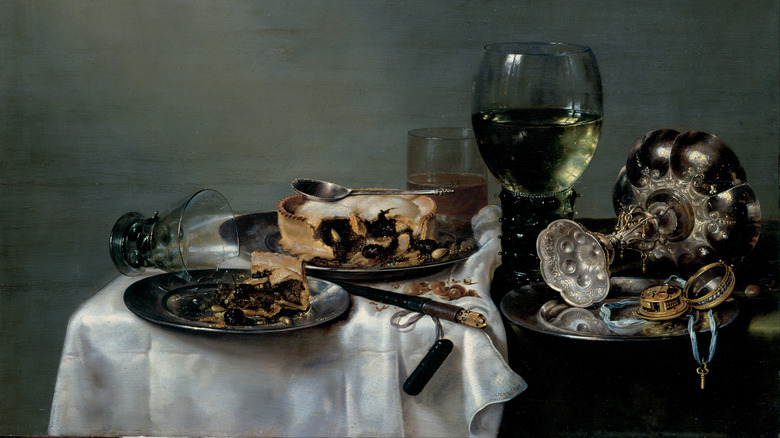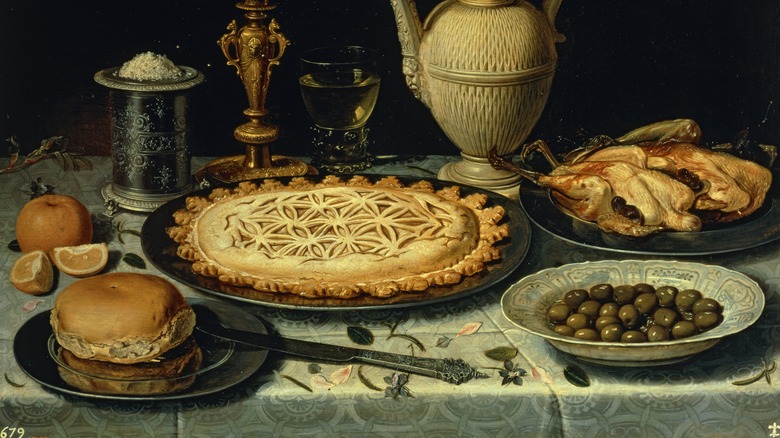Why The First Pie Crusts Were Literally Inedible
In all its flaky and buttery glory, the perfect pie crust provides a beautiful contrast to the sweet or savory filling it contains. Modern bakers and lovers of sweets alike recognize this pastry as an integral part of the dessert as a whole. A lackluster pie crust, whether it be too crumbly, dull, or otherwise, usually means a bad pie entirely.
While this fact seems obvious today, people in Medieval times regarded pie crusts a whole lot differently. Back then, the pastry went by the unusual name of "huff paste," and this stuff was not for eating. Instead, huff paste was a sturdy vessel made from dough used to contain the sweet or savory filling of a pie. Unlike the sweet, flaky pastries we know today, huff paste consisted of bland ingredients like coarse rye flour and hot water, which made for an especially hard shell once baked. Bakers could also bake a lid for these concoctions with the same ingredients to make a resealable container that could keep all kinds of perishable food fresh. This device was affectionally known as a "coffyn."
If you think the crust is bad, let's talk about the filling
It was an arduous task to mill flour in the Middle Ages, so while the nobility did not indulge in huff paste, lower classes tasked with the milling work likely did to avoid wasting any precious time or ingredients. While the flavor or texture of these pastry shells didn't matter much, as they weren't really meant to be eaten, oftentimes the ingredients for the pie fillings weren't much better either. Sugar was a scarce commodity back then and was used only sparingly. Bakers often relied on unlikely additions such as pepper, prunes, or even sandalwood as sweeteners in the Medieval versions of many different pies like the classic apple. That lack of sugar might explain why people never even considered the idea of sweetening a pie crust until much later in history.
Today, simple ingredients like salt, fat, a liquid, and wheat flour make up a basic pie crust, which lends a much softer end product than rye. Still, since sturdiness was the goal for pie crusts in the Middle Ages, rather than an appealing taste or texture, the discrepancy makes sense. (And makes us glad to be on this side of history.)
Pie crust establishes itself as a pastry
As centuries passed, tastes became more refined, and the love for pastry began to pick up and flourish going into the 17th century. Gradually, people began to see the potential in huff paste and began experimenting with using more flavorful ingredients in those protective crusts.
Over time, huff paste slowly began to take on the look of modern pie crusts, with the rye and water additions swapped out for sweet ingredients like egg custard and fruit. Tarts made with sweet and savory flavors were especially popular too. Slowly, people started to see a pie's crust less as a vessel of preservation and more as an opportunity to get creative with flavor. Some even took to changing the look of their pie crust entirely, crafting intricate designs on its surface and coloring it with vibrant ingredients. So while pie crust has not always been regarded as the delicious pastry it is today, over time it has established itself as one of the most delicious parts of the pie. Personally, we are very big fans of this rebrand.


